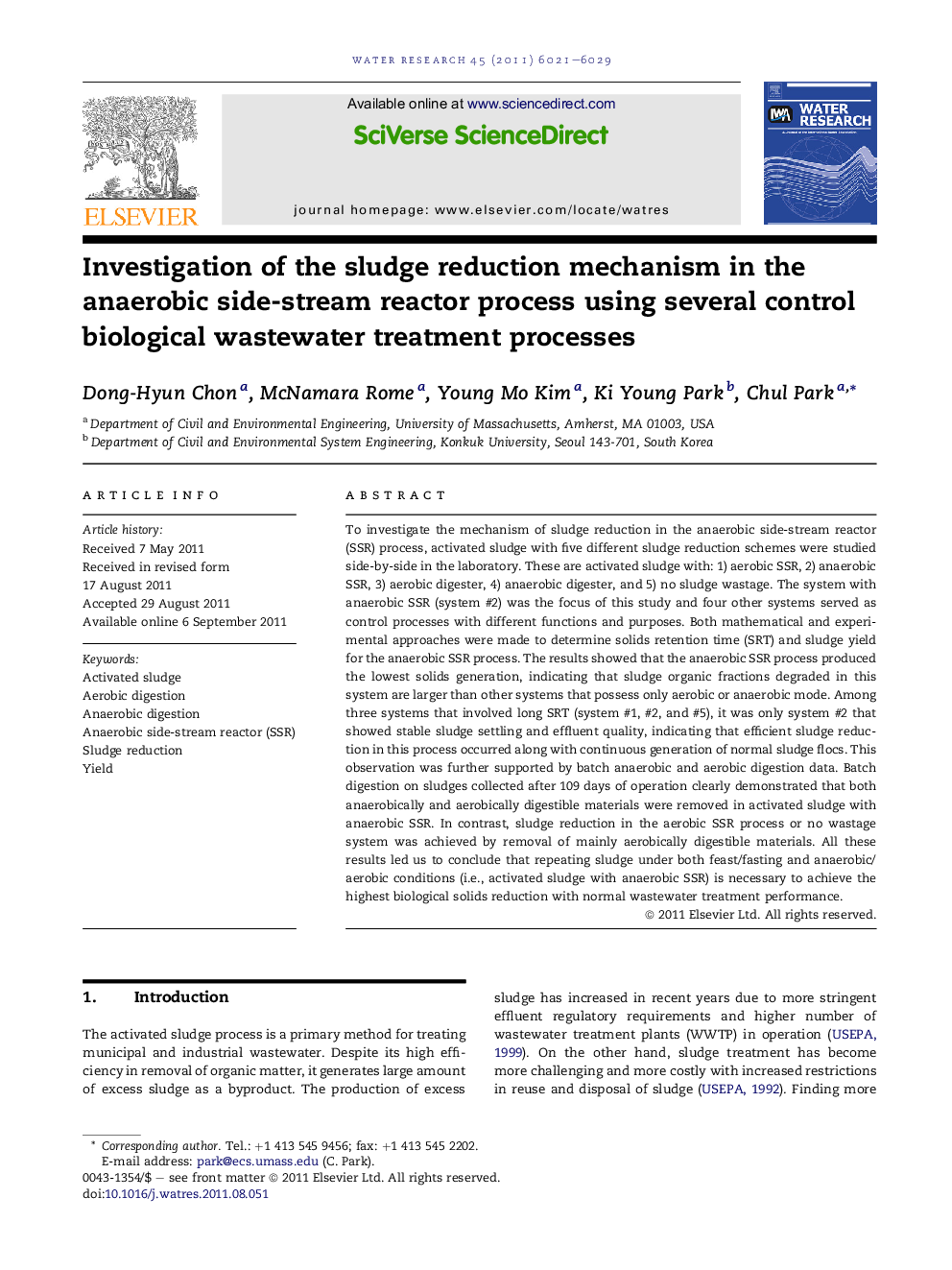| کد مقاله | کد نشریه | سال انتشار | مقاله انگلیسی | نسخه تمام متن |
|---|---|---|---|---|
| 4482686 | 1316866 | 2011 | 9 صفحه PDF | دانلود رایگان |

To investigate the mechanism of sludge reduction in the anaerobic side-stream reactor (SSR) process, activated sludge with five different sludge reduction schemes were studied side-by-side in the laboratory. These are activated sludge with: 1) aerobic SSR, 2) anaerobic SSR, 3) aerobic digester, 4) anaerobic digester, and 5) no sludge wastage. The system with anaerobic SSR (system #2) was the focus of this study and four other systems served as control processes with different functions and purposes. Both mathematical and experimental approaches were made to determine solids retention time (SRT) and sludge yield for the anaerobic SSR process. The results showed that the anaerobic SSR process produced the lowest solids generation, indicating that sludge organic fractions degraded in this system are larger than other systems that possess only aerobic or anaerobic mode. Among three systems that involved long SRT (system #1, #2, and #5), it was only system #2 that showed stable sludge settling and effluent quality, indicating that efficient sludge reduction in this process occurred along with continuous generation of normal sludge flocs. This observation was further supported by batch anaerobic and aerobic digestion data. Batch digestion on sludges collected after 109 days of operation clearly demonstrated that both anaerobically and aerobically digestible materials were removed in activated sludge with anaerobic SSR. In contrast, sludge reduction in the aerobic SSR process or no wastage system was achieved by removal of mainly aerobically digestible materials. All these results led us to conclude that repeating sludge under both feast/fasting and anaerobic/aerobic conditions (i.e., activated sludge with anaerobic SSR) is necessary to achieve the highest biological solids reduction with normal wastewater treatment performance.
► We studied the mechanism of sludge reduction in the anaerobic side-stream process.
► The process led to the lowest sludge generation among 5 investigated processes.
► The process continuously refreshed floc leading to normal floc and effluent.
► The process degraded both aerobically and anaerobically digestible materials.
► Repeating aerobic feast/anaerobic fasting leads to floc refreshment and stability.
Journal: Water Research - Volume 45, Issue 18, 15 November 2011, Pages 6021–6029